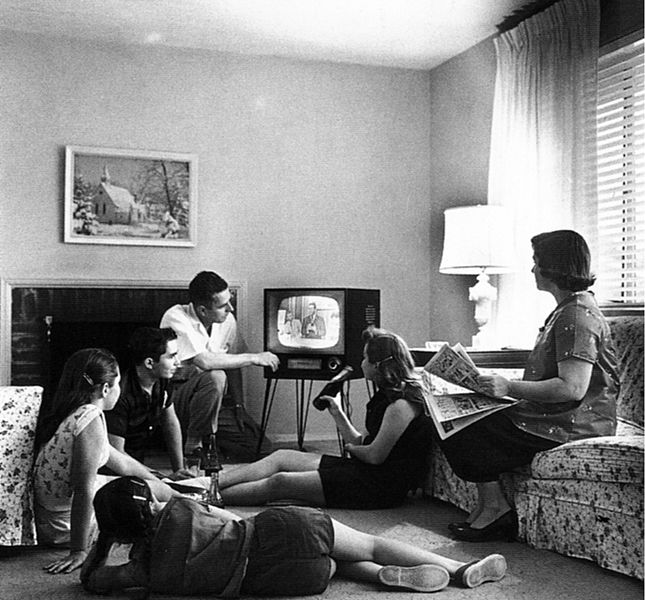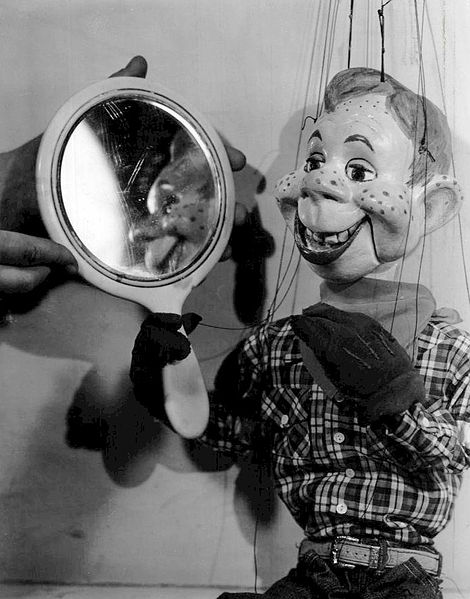
Figure 1 – American family watching television in 1958. Imqage from US National Archives and posted by Dr. William J. Ball. From the Wikimedia Commons and believed to be in the public domain.
Last Sunday my wife and I found ourselves in the “great channel flip.” That is we flipped through 200 channels of moronic television in search of something worth watching. Back in the dinosaur ages, we had three television channels: CBS, NBC, and ABC. The addition of PBS was a godsend that increased our options by 33 % and at the same time enabled us to become media elitists. I watch PBS! Glory be me! Did anyone notice that most of the good stuff was coming out of the UK? Hmm. Well along came UHF (that’s ultrahigh frequency TV) and the sluice gates were supposed to be opening a whole new world for us. It was to be a media revolution that would ultimately lead to customized and interactive TV. Imagine that – interactive television!
What bothered me the most about Sunday was that our local NBC affiliate was carrying an infomercial. I mean, they were able to make more money selling away all air time than they could make with a standard TV format. Makes you wonder what this world is coming to.
The thing is that the millennials, people loosely born between 1980 and 2000, are watching far less television that us aging boomers. While 76 % of boomers get their news and images principally from broadcast television, only 65 % of generation X does so, and this falls to a miserable 46 % for millenials. 34 %, that’s one in three millenials mostly watch on line video.
When I talk about, for instance, the Kennedy assassination our means of experiencing those images was on television. Now not so much. I spend most of my image transfer time online. I don’t even read paper news media anymore. It’s all online.
Is it sad? Certainly not. Broadcast TV is doing a miserable time of serving us. In fact, they always have. It’s just that fifty years ago they were the only game in town, save radio. And radio, well is radio. It lacks images. It is telling that today, I’ll see a teaser on the television and the first thing that I do is get on the internet and look it up.
We are undergoing a major shift in the way that we process images and news. Such shifts are akin to the major extinctions in biological evolution. I contrast this with what I’ve referred to as transitional technologies, which bridge a gap but are short lived. Television has been around for a long time. Then came UHF and after that digital TV and the interenet. UHF was a transitional technology a short lived species of television. Television had a very long run, like for instance the trilobites of biological evolution. The telegraph had a long run. Film-based analogue photography had a long run. We didn’t even know that itr was wireless until digital photography was invented. The wired telephone had a long run. Then came analog wireless telephony – a transitional technology. Now we have digital wireless. Will that have a long run?
A lot of times it’s hard to imagine what comes next. That’s because technology being what it is and the singularity being so near, we usually can create whatever we can imagine. Some of you are probably thinking: “Beam me up, Scotty.” So i have to ask you would you like to trust you cell phone company nit to drop the call while your molecules or this electroprint are being transported across space. I’ve seen the movie “The Fly.” We’re playing with dangerous stuff here.
So three important points here:
1. Technologies are like biological species in the stream of technological eveolution
2. Some technological species are long-lived. It takes a mass extinction, a eureka event to wipe them out.
3. Other technologies are transitional. They are short lived because while they recognize a technological need they don’t quite fit the bill.
And yes, friend “it’s Howdy Doody time!”

